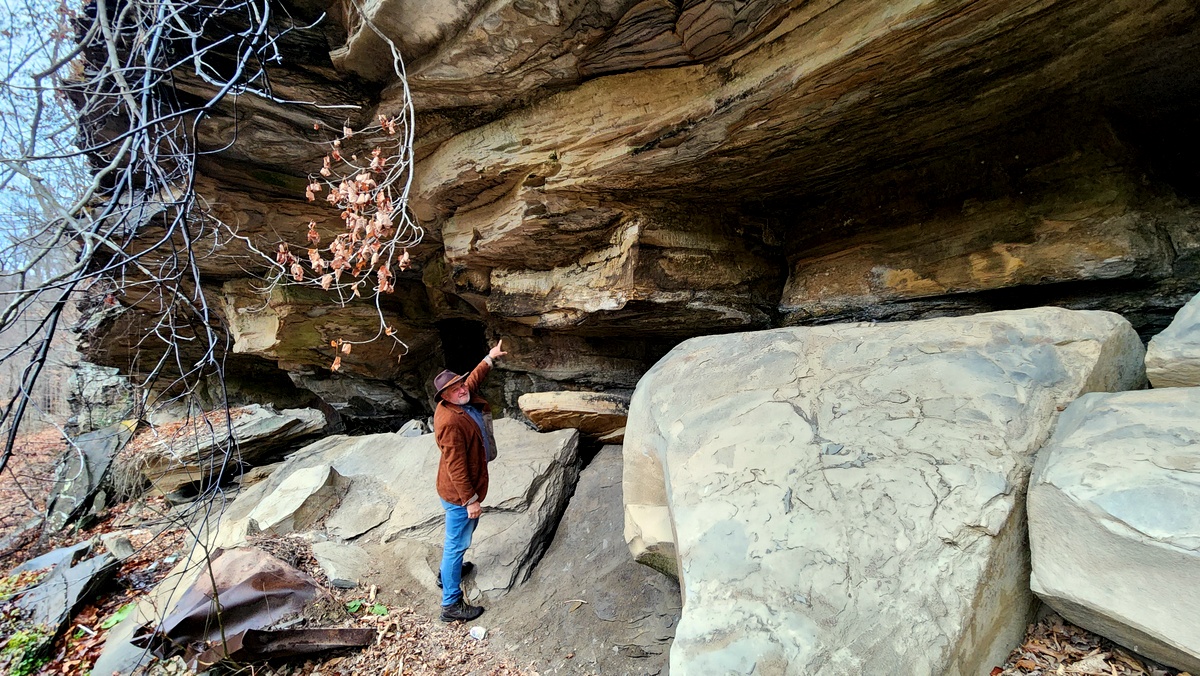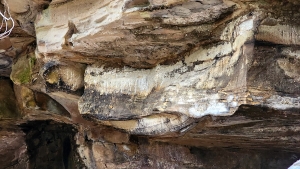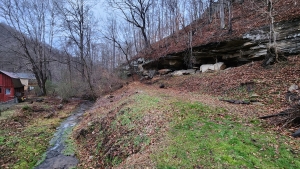
The Beards Fork Petroglyphs, at Beards Fork, West Virginia, in mountainous western Fayette County, include inscriptions believed to represent wild animals.

The petroglyphs are located on a sandstone shelf beneath an overhang along the lefthand fork of Beards Fork of Loop Creek, a tributary of the Kanawha River. Native Americans inscribed this rock art. The site is sometimes called the "Chisled Rocks" or "Lettered Rocks."
Native American priests and shamans often inscribed rocks with images at locations they believed were underworld entrances.

It is located only a few miles from the Ancient Walls at Mount Carbon, West Virginia. This proximity has led some writers to speculate about a connection between the two sites. Some have suggested the lettered rocks acted as a "signpost" to indicate directions to the Mount Carbon site or provide information about the walls found there. Such theories are based on guesswork rather than scientific evidence.
In the early 1900s, the Dempsey Indian Mound was discovered only about three air miles distant. The Robson Mound is in a loop of level land on Loop Creek below the mouth of Beard's Fork.
The site is easily accessible on foot along a former road to the Beards Fork Company Store. It is located on property owned by Pocahontas Surface International at Google Coordinates 38.063828, -81.226299, about 150 feet from Beards Fork Road.
NOTE: If you choose to visit this or any other petroglyph in West Virginia, officials at the W.Va. Division of Culture & History request that you please refrain from touching the rock. Oils in human skin can cause the rock to more quickly erode.
Sign up for a FREE West Virginia Explorer Magazine copy in your weekly email. Sign me up!






























